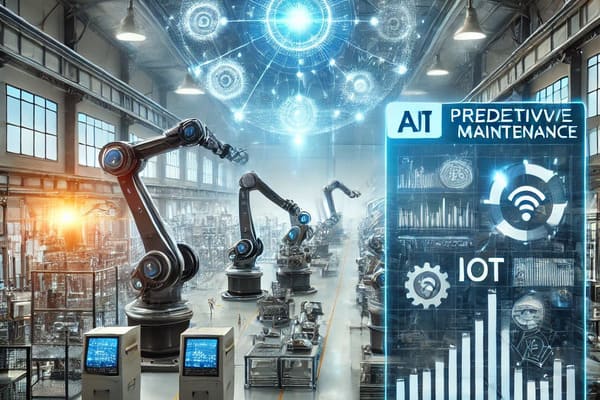Introduction: AI and IoT in Industry 4.0 Are Reshaping Manufacturing
We are entering a new age of innovation where AI and IoT in Industry 4.0 are reshaping how factories operate. At the forefront of this shift are artificial intelligence (AI) and the Internet of Things (IoT) together enabling smart manufacturing that is faster, more adaptable, and insight-driven.
The Rise of the Smart Factory with AI and IoT
Unlike traditional setups, smart factories in Industry 4.0 use advanced systems to monitor, analyze, and improve operations continuously. Thanks to connected devices and real-time analytics, these environments can self-optimize based on demand, performance, or even external disruptions.
For instance, machines equipped with IoT sensors now alert teams before breakdowns occur. At the same time, AI tools help predict and manage workloads, ensuring smoother and more efficient workflows in smart factories.
How AI in Industry 4.0 Enhances Modern Manufacturing
Artificial intelligence transforms factory floors into intelligent, adaptive spaces. Here’s how AI contributes to Industry 4.0 smart factories:
Predictive Maintenance with AI
Rather than waiting for issues to arise, AI-powered systems forecast failures based on machine behavior. This proactive approach greatly reduces downtime.
Process Optimization Using AI
Moreover, by analyzing operational data, AI helps identify bottlenecks and offers suggestions for improvement something traditional systems cannot do in real time.
Quality Assurance in AI-Driven Manufacturing
With computer vision and deep learning, defects are detected instantly. As a result, manufacturers save costs and protect brand integrity.
The Role of IoT in Industry 4.0 Smart Factories
IoT in Industry 4.0 serves as the digital nervous system of modern production plants.
- For example, temperature, vibration, and energy sensors track equipment health in real time.
- These insights allow factories to run smarter not harder while minimizing waste.
IoT also connects every part of the production process, improving transparency, safety, and supply chain integration.
Benefits of AI and IoT in Industry 4.0 Smart Factories
| Benefit | Description |
|---|---|
| Productivity | Speeds up output while reducing human error |
| Maintenance | Predictive insights cut repair and downtime costs |
| Efficiency | Optimizes resource usage and energy consumption |
| Quality | Consistent results and real-time quality control |
| Security | Advanced monitoring and anomaly detection |
Case Study: Bosch’s Use of AI and IoT in Industry 4.0
Bosch uses advanced technologies to power its manufacturing lines. Their results include:
- 25% fewer machine breakdowns
- 20% improved production output
- AI-powered defect detection systems
This real-world success highlights the benefits of integrating AI and IoT in Industry 4.0 smart factory environments.
Challenges in Adopting AI and IoT in Industry 4.0
Despite its promise, adopting smart factory technology in Industry 4.0 comes with hurdles:
- Cybersecurity risks in connected environments
- Cost and complexity of transformation
- Skills gap in digital and AI tools
- Resistance to replacing legacy systems
However, businesses that invest in upskilling teams and modernizing infrastructure stand to gain significantly.
Conclusion: Why AI and IoT Are the Future of Industry 4.0
The combination of AI and IoT in Industry 4.0 is pushing the boundaries of what’s possible in manufacturing. Consequently, smart factories are becoming the new normal. Those who embrace this transformation early will be best positioned to lead in a competitive, tech-first world.
